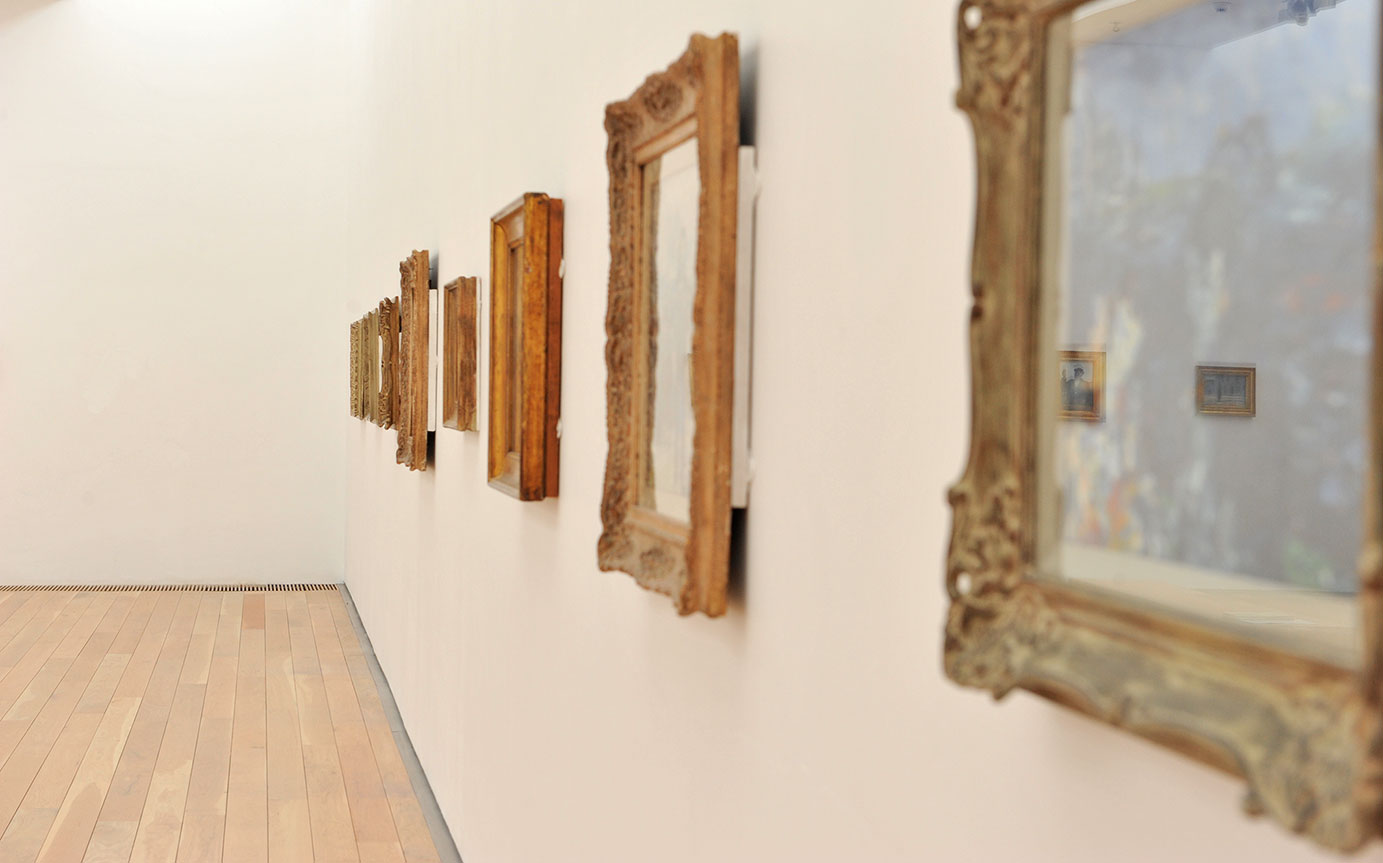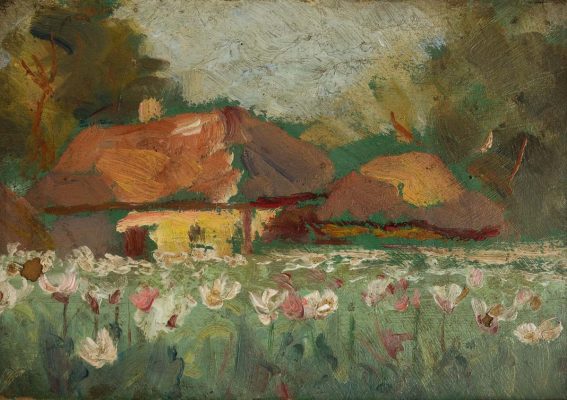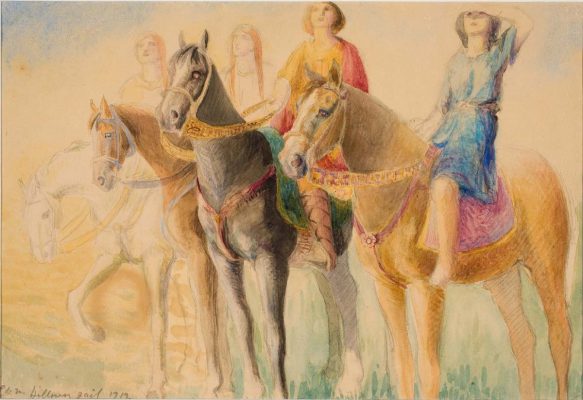Date: No Date
Dimensions: 54 x 31cm
Medium: oil
Collection: Niland Collection
Description:
Constance Gore-Booth was born in London, the eldest child of the Arctic Explorer Sir Henry Gore-Booth. She was brought up at the family home Lissadell, Co. Sligo. She studied in London and in Paris at the Academie Julian, where Paul Henry was her contemporary. In Paris she met the Polish artist Count Casimer Dunin-Markievicz, whose claim to the title of Count has since been disputed, and they were married in London in 1900. Returning to Ireland she exhibited in Dublin with her friend George Russell and was a founding member of the United Arts Club. Like Russell and W.B. Yeats, Gore-Booth was inspired by both the western landscape and the myths and imagery associated with the Celtic Revival.
As the title suggests, the setting for this painting is near Lissadell. W.B. Yeats first visited the house in 1894 and was particularly taken by Constance and her sister Eva. He later came to disapprove of Constance’s involvement in the Easter Rising, in the poem “In Memory of Eva Gore-Booth and Con Markiewicz,” he recalls his early impressions of the two sisters:
“The light of evening, Lissadell
Great windows open to the south
Two girls in silk kimonos, both
Beautiful, one a gazelle”(1).
1. W.B. Yeats, ‘In Memory of Eva Gore-Booth and Con Markiewicz’, The Winding Stair and Other Poems, 1933.
Written by Riann Coulter
Born 1868, London, England.
Died 1927, Dublin, Ireland.
Countess Constance Marchievicz (née Gore-Booth) was a painter, revolutionary, activist and politician. She was born February 4th, 1868 at Buckingham Gate, London, the daughter of Sir Henry Gore-Booth, explorer, philanthropist and heir to extensive estates at Lissadell, County Sligo. When Sir Henry inherited his estates, the family moved to Lissadell, where Constance and her younger sister Eva Gore-Booth were educated by governesses. The young W.B. Yeats was a frequent visitor, as was A.E. George Russell, and other literary figures of the time.
Constance was presented at the Court of Queen Victoria when she was nineteen and took her place in society. She intended to be a full time artist, and in 1893 went to London to study at the Slade School, and to Paris in 1898, to the Julian School. Here she met her future husband, Count Casimir Dunin Markievicz, a practising artist from a land-owning family of Polish extraction in the Ukraine, Russia. The couple settled in Dublin in 1903, and had one daughter Maeve, born at Lissadell in 1901, who was reared by her grand-parents.
Constance and her husband soon became part of the artistic and social life of the capital. She began to make a name for herself as a landscape artist, and though her output was small some of her work is represented in Municipal collections and other Galleries. The Markievicz marriage was not a success; the couple separated and Casimir left Dublin. Thereafter, the Countess, as she was known, became increasingly interested in nationalism and social issues.
She joint Inghinidhe na hEireann in 1907, and contributed to its paper, Bean na hEireann. She later joined Cumann na mBan. Together with Bulmer Hobson, she founded a Youth organisation for boys, the Fianna, in 1909. During the Lock out of 1913, in which workers who supported the union were shut out of their places of employment, the Countess assisted in the soup kitchens and jointed the Irish Citizen Army, formed to protect the workers. During the 1916 Rising, she was Second-in-Command at the St. Stephen’s Green and College of Surgeons garrisons. She was sentenced to death for her part in the Rising, but her sentence was commuted to life imprisonment because she was a woman. She was sent to Aylesbury jail in England where she was held until June 1917.
While in prison she was re-elected president of Cumann na mBan. In the 1918 general election she became first female elected to the House of Commons. She did not take her seat as she supported the Sinn Fein policy of abstentions.
During the Civil War she took part in the fighting before touring the United States in an attempt to raise funds for the cause.
In 1923 she was elected to The Dail. After a short illness Constance Markiewicz died in Sir Patrick Dunn’s Hospital in Dublin on 15th July 1927.





